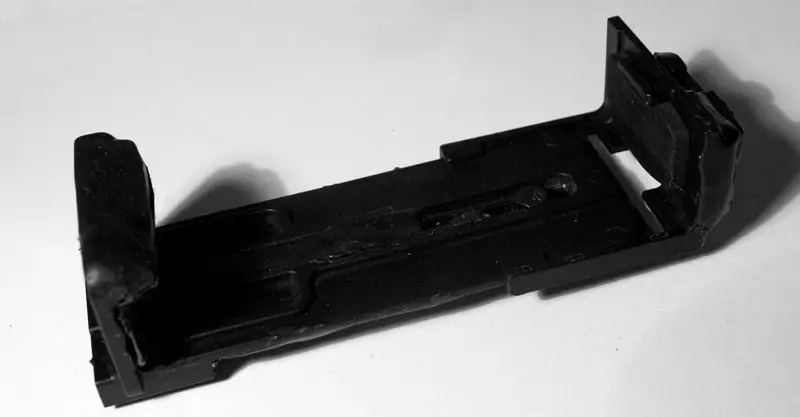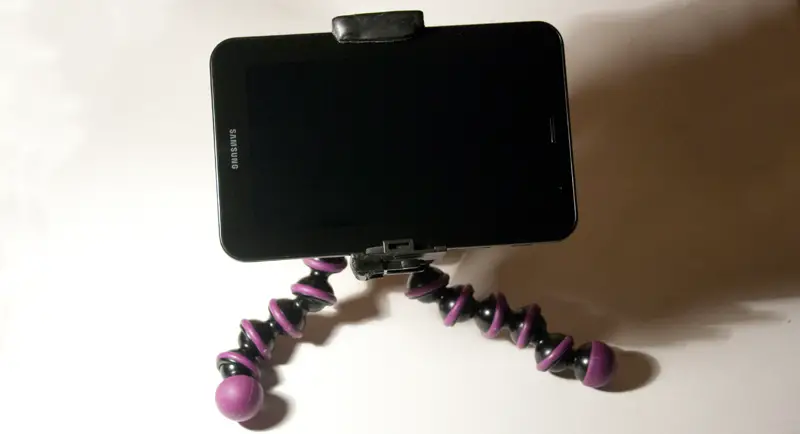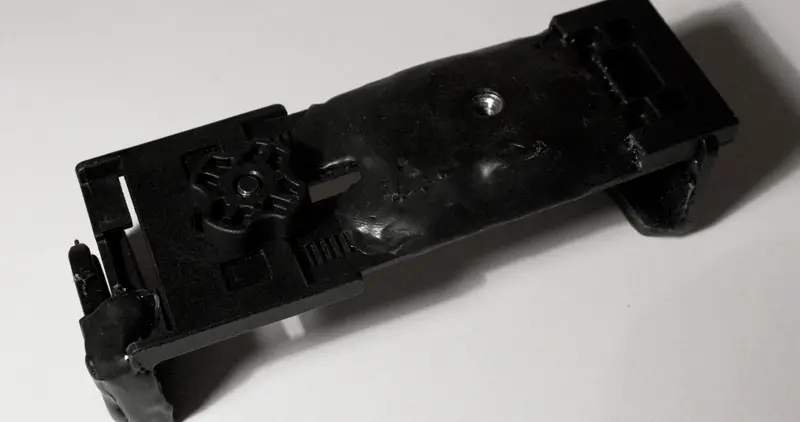Tips and tricks for making your own accessories

Getting accessories for mobile devices can be annoying. They can be expensive, hard to find, or simply not exist at all. With Android devices the situation is particularly bad, since there are so many that it often takes ages for accessory manufacturers to get on board. Luckily, there’s always the DIY route, a solution I’m rather fond of myself. Read on for some tips and tricks for how to stick it to the manufacturers and make your own accessories.
China, oh China
You can make a lot from scratch, but it’s always nice to get a bit of help. Chinese el cheapo-stores like DealExtreme have a lot of stuff that you can either use right out of the box or modify/include in some way.

Modularity is key
Accessory manufacturers tend to make accessories that work within the company’s own infrastructure – if that. Modular cases exist that come with perhaps a wall mount and carrying strap, but uses some proprietary connection system that doesn’t with with other modular systems. Basically, they have no reason to support attachments made by anyone but themselves, because that would hinder own sales. When making your own accessories, you naturally don’t have that limitation. Modularity is key, and it’s always best to start off with a simple mounting solution for your device and build around it using standard connectors.
When I say “mounting solution”, I basically mean something that will hold your device and provide you with a way to connect it to various things. There are many ways to do this, both from scratch and using existing items. A universal car holder (which you’ll find many of on said Chinese site) is often the best starting point as you can set it to fit your device and maybe even glue it down and remove excess material once you have it “configured”. Another solution is to get a cheap case along the lines of a snap-on hard case and simply use that as a clip-in holder, though this requires that your device has made it to the level where cheap such cases exist. A cardboard plate with some rubber bands can even provide a mounting solution, the same with velcro if you don’t mind attaching something to your device directly. The kind of case that Dodo makes is ridiculously easy to duplicate using an old book and some Sugru, hot glue or similar material.

As for the connections between accessory pieces, tripod screws are excellent choices. They’re standardized to the point where you can go to the hardware store and buy screws and nuts that work, and you have the entire camera world out there to provide you off-the-shelf accessories that are compatible. It’s best to go with wing nuts rather than ordinary nuts since they’re less likely to spin around whatever you attach them with (glue, Sugru etc), or you can buy something like this which gives you four plastic-encased tripod nuts which are excellent for attaching to the backside of a device mount in order to provide a place for tripod-like accessories to screw in. Another great sorce for connection hardware is side release buckles, though they’re more useful for making your own “proprietary” modular systems.

Once you have a base mount that has a camera tripod nut, you suddenly have a world of accessories out there that already work. Windshield mount, also known as refrigerator/window/etc mount, no problem. Need a table stand? Small tripod! Need a floor stand? Large tripod! Extendable arm, check. Wallee wall mount system for only $50 (you need the case as well) you say? I’ll raise you a $3.70 accessory that does the same thing and more.
Hot glue ftw
Hot glue is one of the most awesome inventions ever, however it requires some tricks to work well for things like this. First off, find some colored glue sticks – preferably black, as most things are black these days. Normal semi-transparent glue sticks are mismatched in color with pretty much any item known to man and will look like absolute crap when used on …well, anything. If you match the color of the glue sticks to the items you’re gluing, however, it’s a whole other deal. Black glue sticks in particular work very well because it’s hard to see subtle nuances with black. Piled on as much glue as needed to get the job done, and if the colors are matched, it should look a heck of a lot more natural than those “default” glue sticks.

Matching colors is however only half the battle. Hot glue works best if you know how to work it. You can shape and form hot glue more or less however you want as long as you know a few tricks. There are two things that will help you immensely when dealing with hot glue: cold water and olive oil (or something similar). Both of these are used to shape the glue and get around the fact that it normally just flows wherever it feels like flowing. Cold water helps cool it quicker, so if you want it to not flow, simply wet your fingers and carefully (so you don’t burn yourself) control the “flow”.
Olive oil works a lot the same way, but has one more advantage: hot glue won’t stick to oily surfaces. This can be used in several ways. If you take something like a knife and soak the blade in olive oil, you suddenly have a tool that can manipulate large blobs of hot glue and push it into shape without getting glued itself. Want flat edges/”walls” made of hot glue? Pile on glue against such an oiled up knife, and voila. Another way to use it is to oil up items that you want to use as molds. An example is the camera tripod adapter I made for my Samsung Galaxy S2 (see picture below) in order to mount it to my actual camera tripods for filming. I found a wooden cutting board that I had used as a soldering platform, made sure it was the right size to emulate the part of the S 2 that I wanted to make a mount for, oiled it up, and piled on all around it with hot glue (I used some of the transparent sticks on it as that one I don’t care how looks). All around the edges of the board I added glue, shaping as I went. After the glue had dried all around I simply took a knife and lifted the edges slightly, and the whole thing came off in one single piece. After washing and drying off the oil, my S 2 fit right in and all I had to do was add a tripod nut to the bottom.

If you want to do something similar, simply find something that has the shape and size of the item you want to make accessories for (as oiling and gluing an actual device is unwise). This can be as simple as some cardboard with tape around it to stop it from absorbing the oil, or as complicated as a plastic dummy replicate of the device.
Smoothing out surfaces and edges is the final trick for dealing with hot glue. I already mentioned how to make “walls” with a oiled up knife or other tool, but you can also do this after the fact. Sharp knives and scissors cut hot glue very easily, and it’s often simplest to just pile on glue and cut it afterwards. That’s what I did with the S 2 camera tripod adapter, and it worked well. As for surfaces, the trick there is to use a lighter or glue gun and heat up the top later of glue so it flattens out and gets rid of the glue strands that are bound to settle when you apply he glue in the first place. If you use a lighter, hold it so the heat from above the flame heats the glue, don’t put the flame to it and set it on fire. For large surfaces you might want to heat it up and use an oiled finger to smooth it out, but again, don’t burn yourself.

If you absolutely want to avoid hot glue, there are other options. I already mentioned Sugru, which is an awesome product that has some nice features that hot glue can’t match. However, hot glue has the advantage of curing very quickly, and so is easier to work with without spending days on something. As long as you know how to work it, hot glue can do more than people know.
Anything worth doing is worth overdoing
The thing you definitely want to make sure of when making your own accessories that puts your device in a situation where it might fall down from things is that it’s secure. You don’t want to extend you iPad off the wall in a mounting system where the tripod nut twists out of the hot glue and sends your iPad plummeting to the floor. My general rule of thumb is to secure everything to the point where I can’t break it if I actually try, as that’s a fairly good indication that gravity can’t either. If you’re relying on huge blobs of glue to keep everything together, it’s always a good idea to reinforce it internally. Everything from chopsticks to metal rods, pens and such can be used to create rigidity. The game controller mounting system below might scare people who know how that controller looks normally, as there’s seemingly nothing but glue holding up my (in this case) giant galaxy Tab. That’s not the case, though. Inside that glue you have a skeleton of plastic that’s glued directly to the controller with plenty of surface contact with the controller to keep it secured. It held the Galaxy Tab up even at that point, so everything I did after that is technically “overdoing it”, or as I like to call it, “paranoia mode”. There are also two metal rods hidden in there, both of which are secured against the lower back side of the controller and then to the top of the connector between the Tab mount and the controller add-on. These provide rigidity, and with all that glue covering it all up the added mounting system is likely to be the last thing to break on that thing.

Don’t trust those Chinese suction cups even if you tried them on your window for a day and almost ripped out the entire window when removing them (I may, possibly, have done that, maybe)? Make a system with two of them. Seriously, they’re $6, you can mount half a dozen of them and still have money for a hamburger before reaching the kind of money an official holder goes for, and they might end up being from the same factory anyways. Do keep in mind though that the heavier the device, the more durable your setup has to be.
Final words
Accessories can make a world of difference when using a gadget, which is why it’s such a shame that you can end up spending as much on them as the device itself. If you put together a nice, modular system you’re not only getting everything for less money, but you also make sure that all you need to do the next time around is make a new device adapter.

